Reviews
Review: Dali Oberon 1 C speakers – who said wireless audio is bad?
If you are looking for some great wireless speakers, you’ve come to the right place.
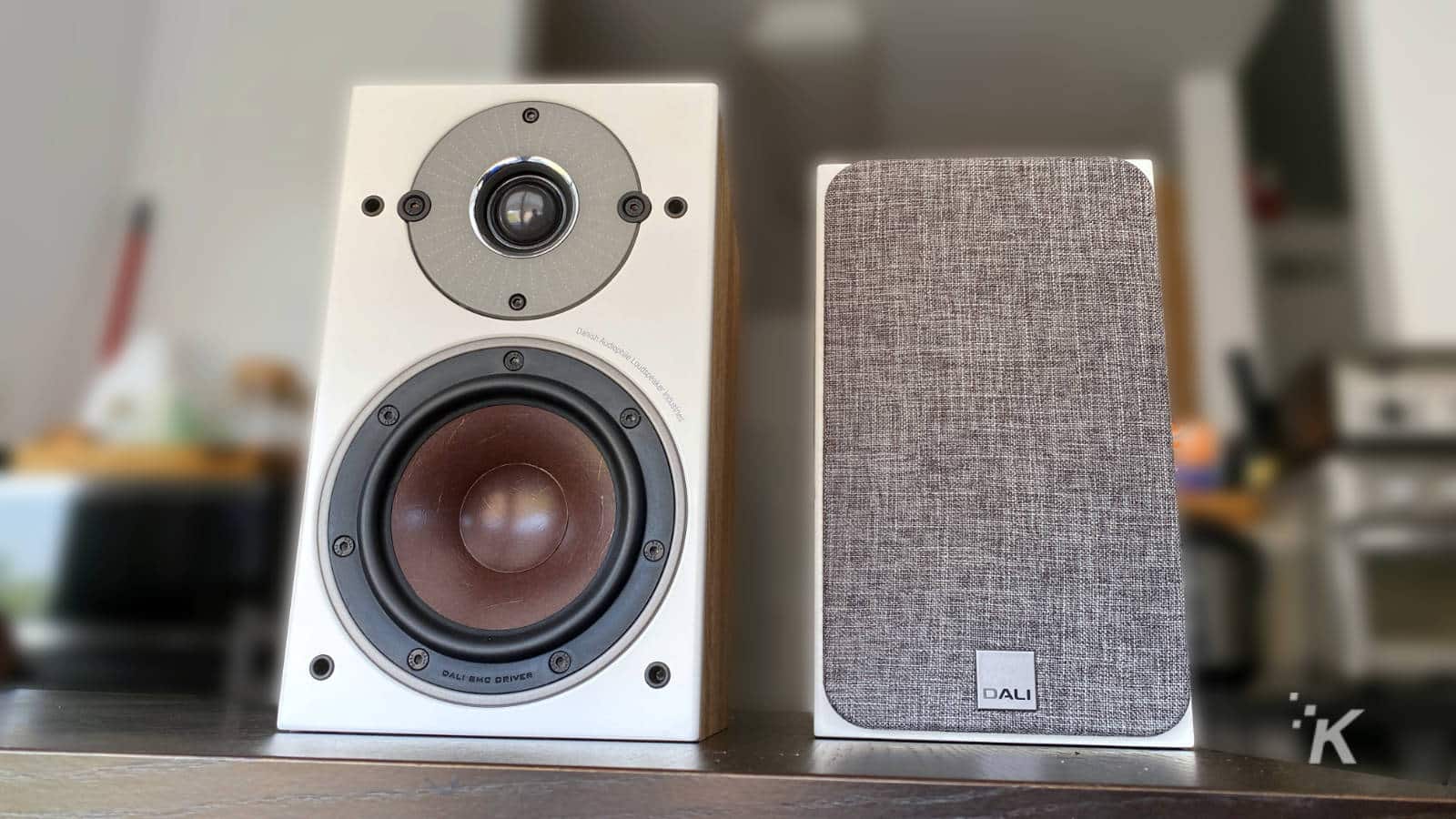
Just a heads up, if you buy something through our links, we may get a small share of the sale. It’s one of the ways we keep the lights on here. Click here for more.
[letsreview postid=”156378″]
Dali Speakers has built its name on gorgeous-looking, well-priced HiFi speakers that sound just as good as they look. The thing is, once you add speaker wires, those speakers never quite look the same because everything looks better without wires.
That got Dali thinking, what if your speakers didn’t need any wires other than a power cable? Enter Dali’s wireless HiFi range, made possible by their Sound Hub that wirelessly streams your sound out to its connected speakers.
We’re looking at one such pair of speakers today, the Dali Oberon 1 C, a $1,499 pair of active speakers that only need one wire to work – one to a wall socket. Can wireless audio wow? Let’s find out.
So, what are they all about?

Okay, let me make one thing clear to start. These are wireless for audio-only. You still need to run one cable from each speaker to a wall socket. The thing is, it’s easier to hide one cable, compared to having to hide speaker cables as well. That’s partly because the wireless nature means you can put them anywhere in your room, so you can hide those cables behind bookshelves or other furniture.
Pulling them out of the shipping box already gave me my first ‘wow’ moment, as these speakers are gorgeous. It’s almost a shame to cover the drivers with grilles, as Dali’s custom drivers really make an impression. There’s one 29mm high-frequency driver and a 5.25-inch low-frequency driver per speaker, both driven by their own 50W RMS class D amplifier.
The incoming signal is split by an active crossover before it gets to the amp section, which isn’t the usual way for active speakers – they usually amplify then split the frequencies afterward. The frequency response is 39Hz to 26kHz, and they can take a full 24-bit / 96kHz uncompressed signal into the active 24-bit DSP inside each speaker.
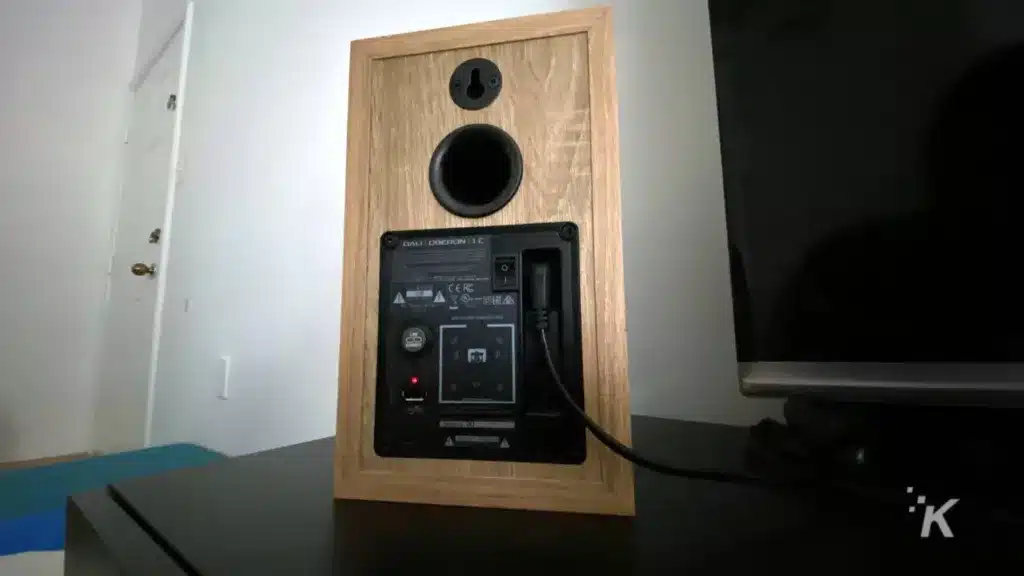
The back of each speaker has a hanger hole if you want to put them up on a wall. They’ve also got a bass reflex port and a control panel for connecting to the Sound Hub. That’s a one-button press in most cases unless you’re using them in another part of the room, in which case you can press the button more times to cycle through the room positions shown on the control panel diagram.
I only had to press once on the Sound Hub, then on each speaker to get everything set up with them correctly orientated on either side of my TV.
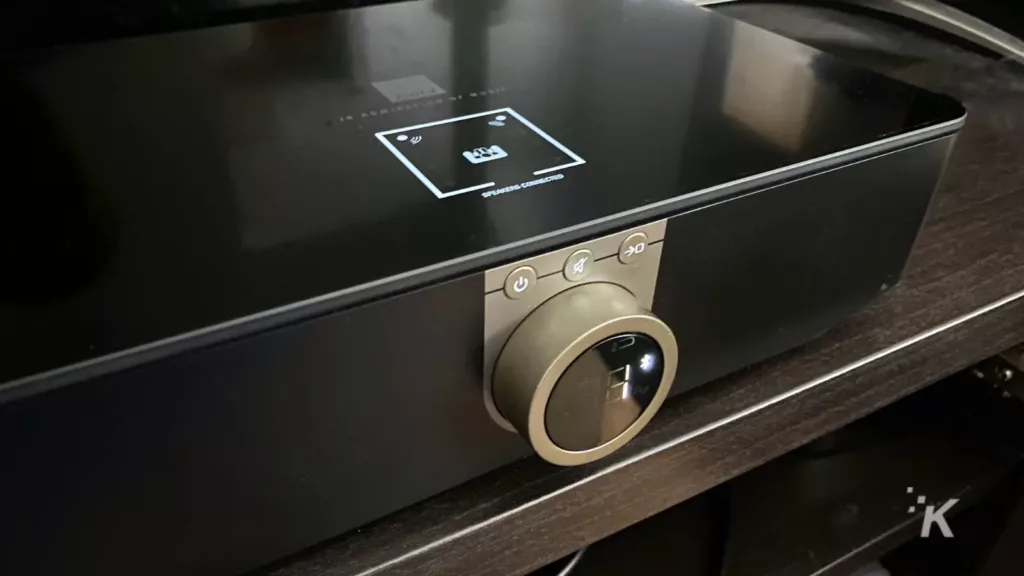
For the review, Dali sent over their more premium $799 Sound Hub loaded with the optional $499 BluOS module. There’s also the Sound Hub Compact, which adds eARC connectivity but the smaller size means you can’t turn it into a whole-house streaming solution with the BluOS module.
The Sound Hub has front controls for volume, power, source select, and mute; along with a lit room diagram that shows where your connected speakers are situated once you’ve set them up. That diagram shows five positions, possibly hinting at surround-sound support in a future update.
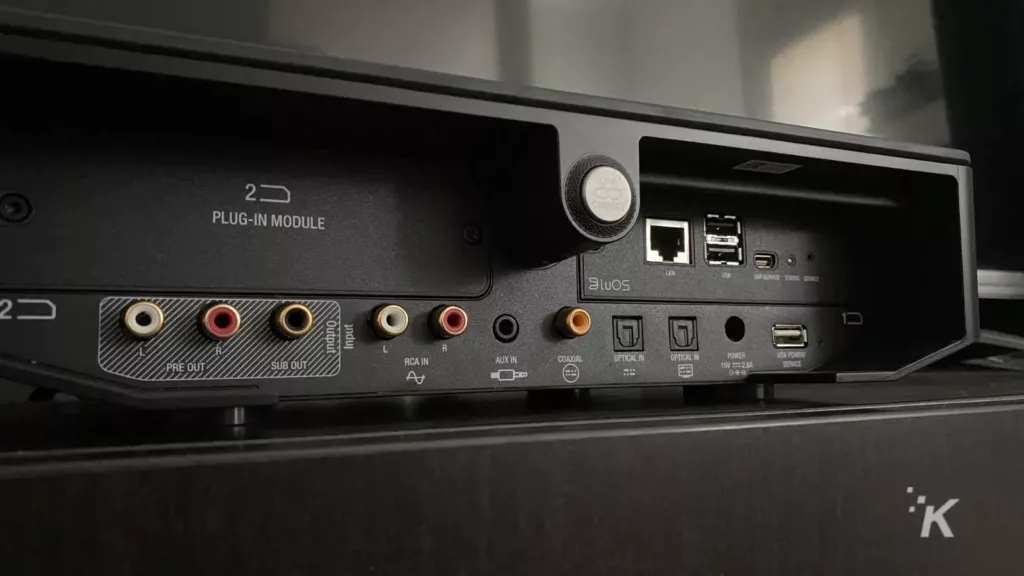
The back has two Toslink inputs, one of which is preferred for TV use, a single Coax, a pair of analog RCA inputs, and a 3.5mm Aux socket. Bluetooth is also integrated, with AAC and aptX HD codecs supported.
While those all need another device to send audio to the Sound Hub, the optional BluOS module turns your Sound Hub into a fully-featured streaming machine. It fits into one of the two expansion ports on the Sound Hub and adds network streaming from services like Tidal, Deezer, or Qobuz. It also adds Ethernet, and two USB-A ports, which can be used to play music off attached drives or even connect to your network with a WiFi dongle.
The wireless connection to the speakers is the star of the show here, with 24-bit / 96kHz audio that has a sub-15ms latency. That means no need to correct for lipsync issues while you’re watching TV. So, is it as good as it sounds?
So, how do they sound?
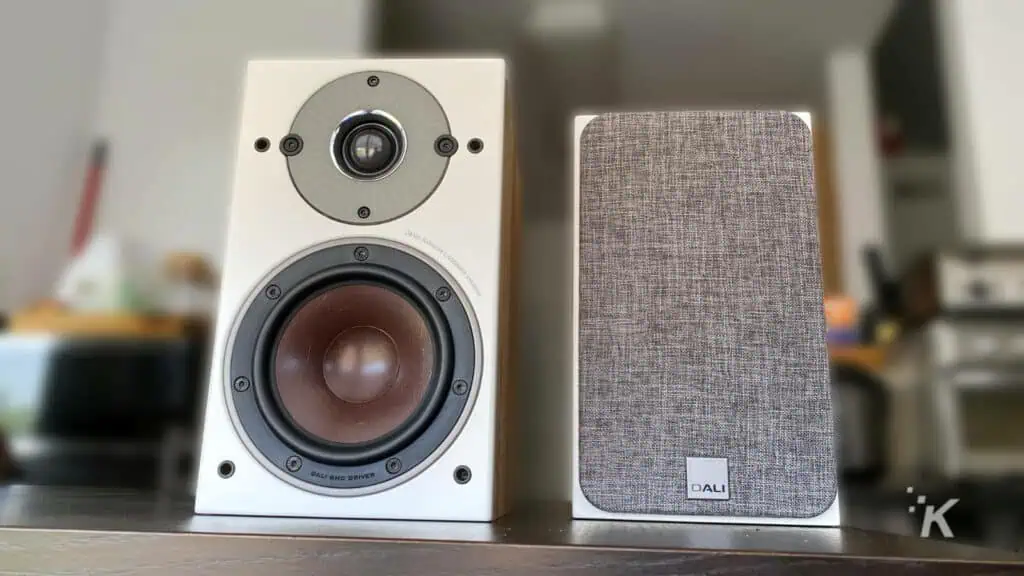
When figuring out where to put them in your room, Dali recommends no toe-in, so the speakers should be placed anywhere while firing straight ahead. Stereo separation was great at roughly six feet apart, the length of my TV cabinet.
The sound is incredibly well rounded, with bass that’s present, clear mids, and treble that’s silky smooth. I’ve never heard such an accomplished pair of active speakers, which usually have muddy bass or piercing treble.
Definitely punching above their stature, these little speakers. If you want more bass thump, it’s easy enough to connect any subwoofer to the Sound Hub, giving you that bit more weight to the sound. That’s especially true if you want to use them for home theater use.
The Oberon 1 C is more suited to a smaller room, or even desk duties. It’s not that the sound won’t reach a larger space, but it gets lost somewhat as they’re not designed for it. Get the larger floorstander version if you want to fill a bigger room.
So, should I buy them?
Love music? Hate wires? Think the two are mutually exclusive? Well, have I got news for you. The $1,499 Dali Oberon 1 C paired with the Sound Hub with the BluOS module sounds every bit as good as wired speakers, and you have to work hard to find a better-looking pair. I’m really going to miss these speakers when they go back, enough so that they’re going on my future wishlist.
The rub? It’s another $1,398 to add the Sound Hub with BluOS module, to turn the Oberon 1 C’s into a wireless streaming powerhouse. If you don’t need the BluOS module though, the Sound Hub Compact is $449 and gives you connectivity to almost everything in your house.
Editors’ Recommendations:
- Review: Campfire Audio Honeydew IEMs
- Review: Master & Dynamic MW08 earbuds
- Review: Cooler Master SK622 Bluetooth gaming keyboard
- Review: X-Chair X3 – the $1,000 office chair I never knew I needed
Just a heads up, if you buy something through our links, we may get a small share of the sale. It’s one of the ways we keep the lights on here. Click here for more.
































